Gardening is a journey that evolves with every season, offering a canvas for creativity and growth. Whether you’re just planting your first seeds or have a plot brimming with blooms, there’s always a new project waiting to inspire your green thumb. From the vibrant colors of spring to the serene dormancy of winter, each season brings its own unique opportunities and challenges. Embracing these changes not only enriches your gardening experience but also deepens your connection with nature.
This article is your guide to harnessing the magic of each season through DIY garden projects tailored for all skill levels. Beginners will find simple, rewarding projects that build confidence, while seasoned gardeners can explore more complex endeavors that push their creative boundaries. You’ll discover how to craft seasonal decorations, create habitats that attract beneficial wildlife, and even produce homemade plant markers that add a personal touch to your garden. By the end, you’ll have a toolkit of projects that ensure your garden remains a vibrant, evolving space throughout the year.
Throughout this journey, we’ll emphasize practical tips and techniques designed to make every project a success. With clear guidance and a spirit of encouragement, these projects are crafted to be both enjoyable and achievable. Whether you’re looking to add a splash of color, enhance your garden’s functionality, or simply spend more time outdoors, this guide is here to support and inspire you. Get ready to dig in and discover the joy of creating a garden that truly reflects the beauty of every season.
Spring Blooms: DIY Flower Beds
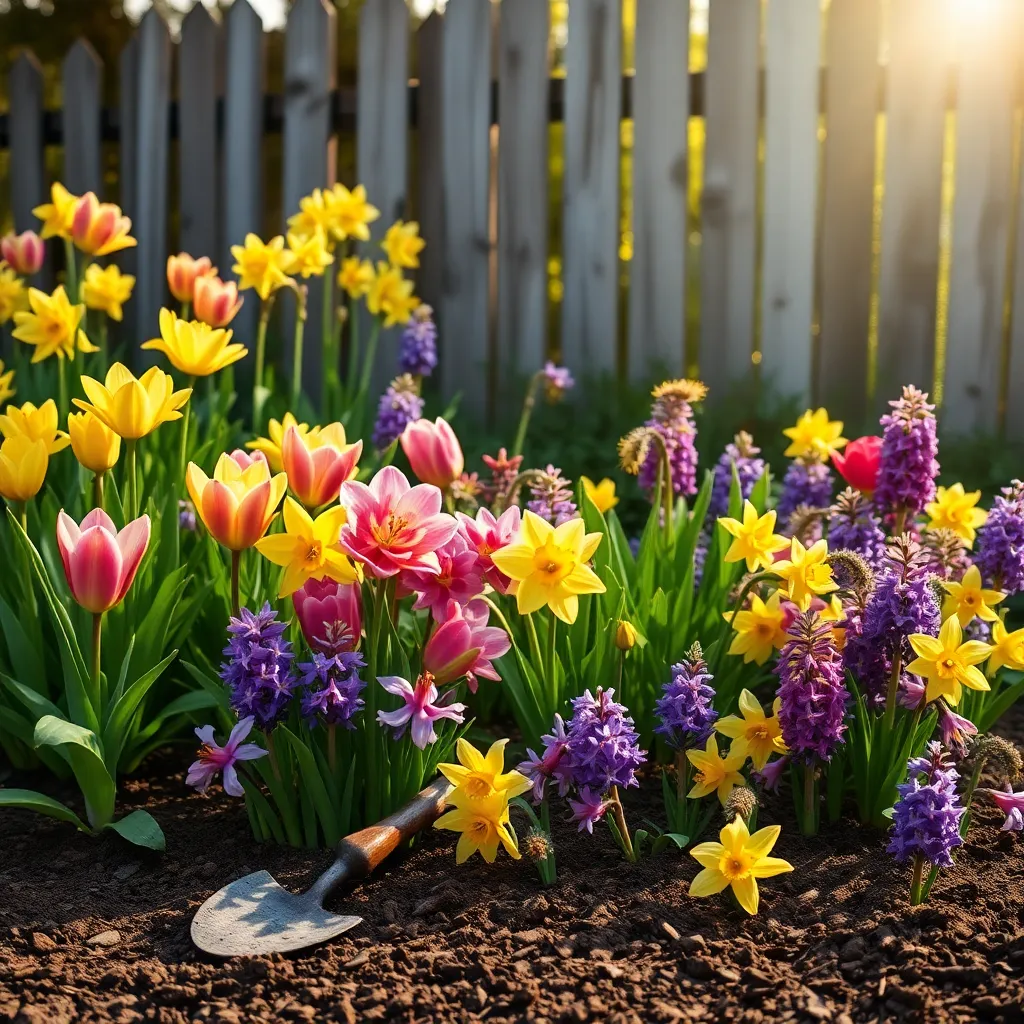
Spring is the perfect time to start a flower bed, bringing vibrant colors to your garden. Begin by selecting a location that receives at least six hours of sunlight each day for the best results.
Prepare your flower bed by clearing away any weeds and debris, then loosening the soil with a garden fork. Incorporate organic matter such as compost to improve soil fertility and drainage.
Choose flowers that thrive in spring, such as tulips, daffodils, and pansies, which are all known for their early blooms. Consider planting perennials for a long-lasting display, as they will return year after year with minimal effort.
Water your flower bed consistently, aiming for about one inch of water per week, either from rainfall or supplemental watering. Use mulch to retain moisture and suppress weeds, applying a layer about 2-3 inches thick around your plants.
For an advanced touch, intersperse bulbs with self-seeding annuals like poppies or cosmos to ensure a continuous bloom throughout spring and into summer. Experiment with companion planting by combining plants that support each other’s growth, such as marigolds with tomatoes, to boost your garden’s health.
Summer Shade: Creative Canopies
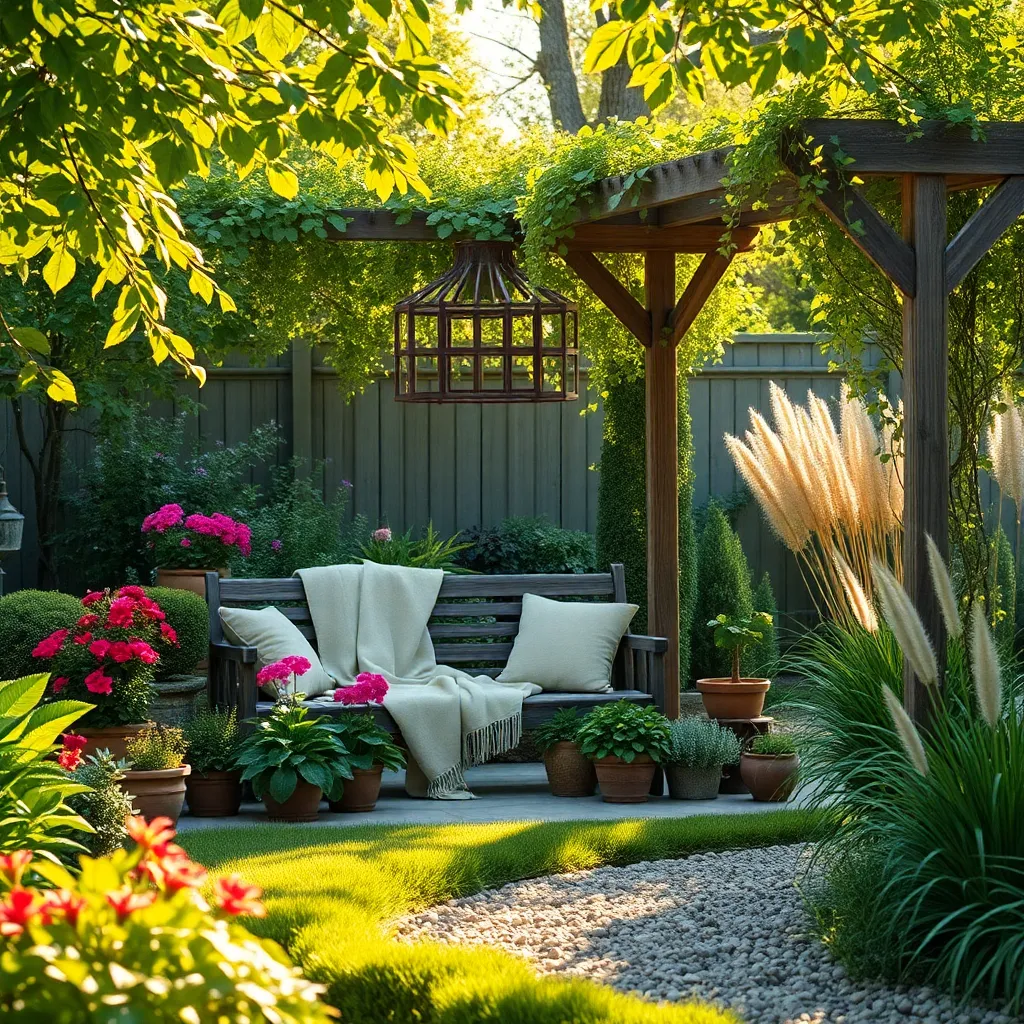
Creating shade in your garden during the summer can transform it into a relaxing oasis. One of the simplest ways to achieve this is by installing a DIY canopy, which can be both functional and aesthetically pleasing.
Start by selecting a suitable location that needs shade, such as a sunny patio or a seating area. Ensure the area has enough space for a canopy structure, whether it’s a simple pergola or a fabric sail stretched across poles.
For a basic DIY canopy, use materials like treated wood or metal poles for durability, and choose a weather-resistant fabric to cover the top. Secure the canopy firmly to withstand summer breezes, and consider adding side curtains for additional protection from the sun.
Incorporate climbing plants like wisteria or clematis to enhance the natural feel of your canopy. These plants not only provide extra shade but also contribute to cooling the area beneath with their lush foliage.
Water these climbing plants regularly, especially during dry spells, to keep them thriving. Mulch around the base to retain moisture and suppress weeds, which can compete for nutrients.
For those looking for an advanced project, consider integrating a retractable canopy system. This allows you to adjust the amount of sun exposure throughout the day, providing flexibility and comfort.
Autumn Harvest: Build Raised Planters
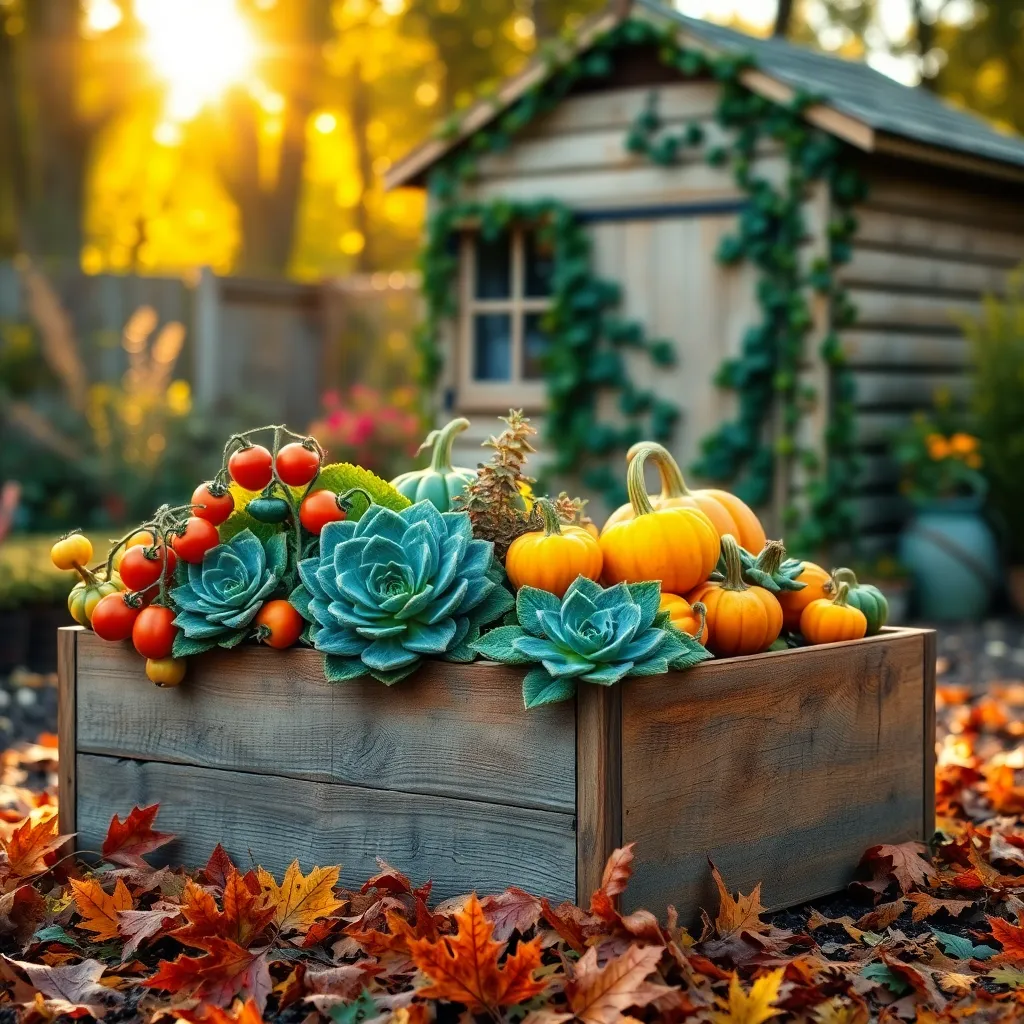
Autumn is the perfect time to build raised planters, as it allows you to prepare for the next growing season. These planters not only provide better drainage but also make gardening more accessible by reducing the need to bend down.
When constructing a raised planter, choose materials that are durable and weather-resistant, such as cedar or recycled composite lumber. Ensure the planter is at least 12 inches deep to accommodate root growth for a variety of plants.
Fill your raised planter with a high-quality soil mix that retains moisture while ensuring proper drainage. A blend of 60% topsoil, 30% compost, and 10% perlite or sand is ideal for most plants, providing essential nutrients and aeration.
Incorporate companion planting to maximize the space and benefits of your raised planters. For example, plant carrots and radishes together, as radishes will loosen the soil for the carrots to grow more easily.
Regular maintenance, such as checking for pests and watering consistently, will ensure your plants thrive. Watering deeply but less frequently encourages roots to grow deeper, making plants more resilient to drought conditions.
Winter Wonders: Design Cozy Greenhouses
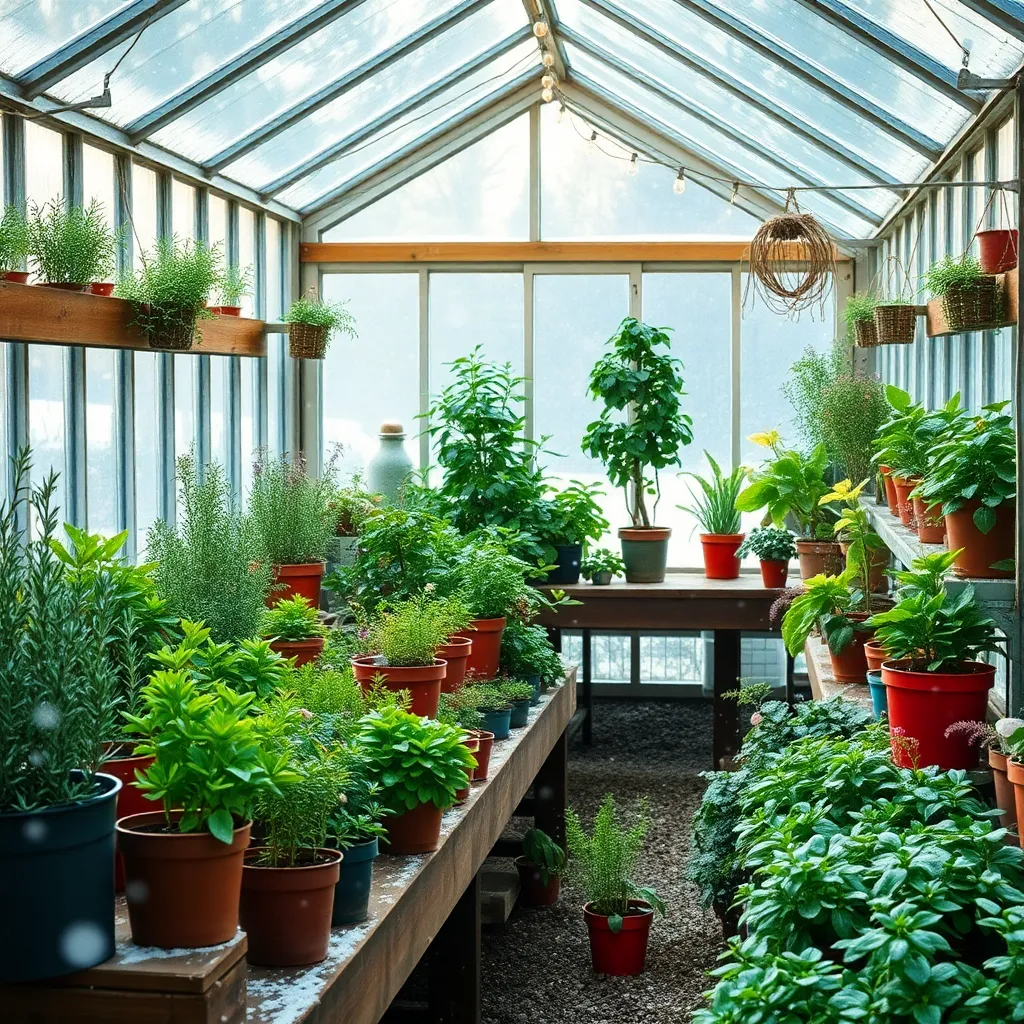
A cozy greenhouse can transform your winter garden into a lush oasis, even when temperatures drop. Start by choosing a location that receives ample sunlight, as this will help maintain warmth and provide essential light for your plants.
When designing your greenhouse, consider using materials like glass or polycarbonate panels for the walls, which offer excellent insulation. Ensure the structure is sturdy to withstand winter winds and snow, if applicable, by using strong frames such as aluminum or treated wood.
Inside your greenhouse, utilize shelving and hanging baskets to maximize space and accommodate different plant types. For beginners, try growing hardy herbs like rosemary and thyme, which thrive in cooler conditions and add fragrance to your greenhouse.
Advanced gardeners might experiment with more delicate plants such as orchids, which require consistent humidity and temperatures. Use a thermostat to maintain optimal growing conditions, ideally between 50-75°F, and a hygrometer to monitor humidity levels for sensitive plants.
Regular maintenance is crucial to a thriving greenhouse. Water plants sparingly in winter, as evaporation rates are lower, and use a well-draining potting mix to prevent root rot.
- Choose a sunny location for optimal light exposure.
- Use glass or polycarbonate panels for good insulation.
- Utilize sturdy frames to withstand winter weather.
- Incorporate shelving for space efficiency.
- Maintain ideal temperatures and humidity for plant health.
Year-Round Beauty: Upcycled Garden Decor
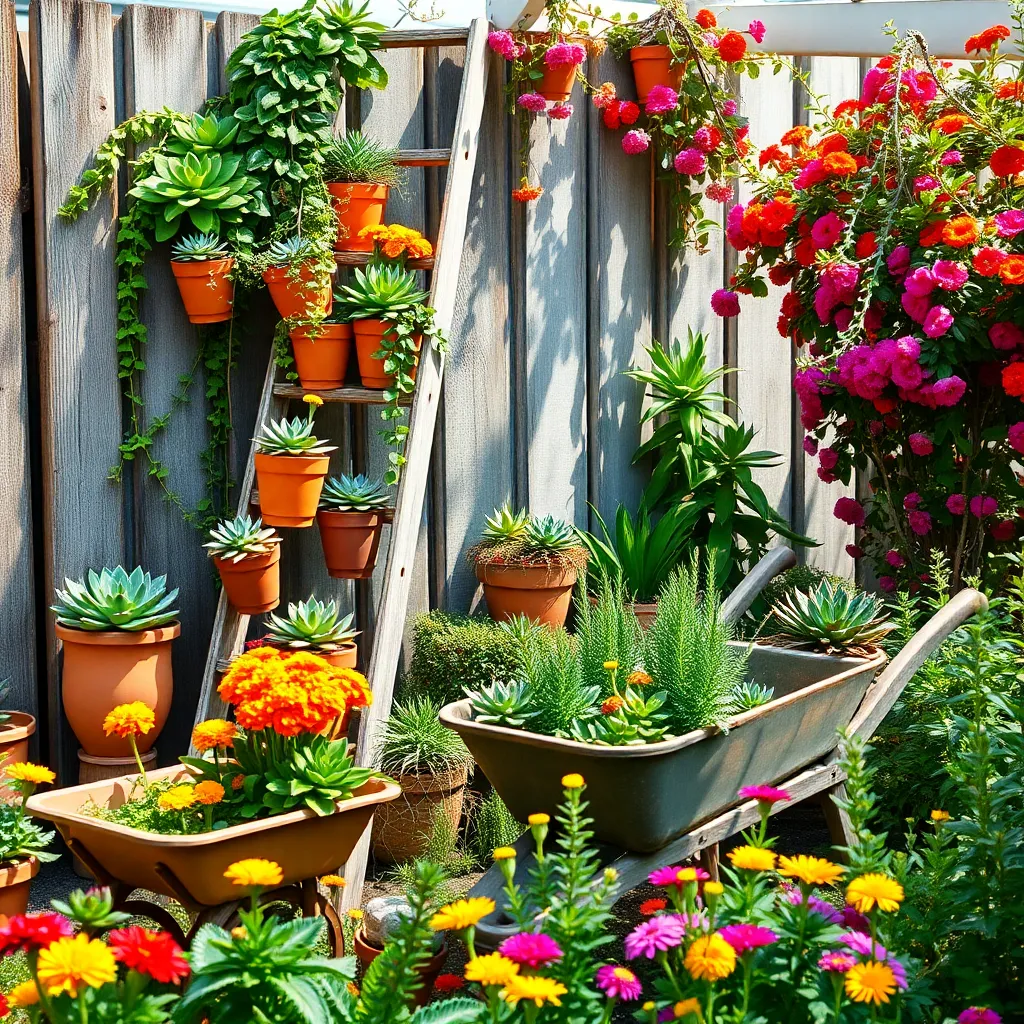
Transforming everyday items into garden decor can add charm to your outdoor space while keeping your garden environmentally friendly. Consider using old tires as planters by painting them in vibrant colors and stacking them to create a tiered effect.
Another idea is to repurpose glass bottles into garden borders or edging. Bury them neck down along pathways or flower beds to create a decorative and functional edge that helps define spaces in your garden.
For a creative twist, use discarded wooden pallets to build vertical gardens. These structures can serve as a perfect backdrop for showcasing colorful annuals or trailing vines, and they provide a solution for small spaces.
Advanced gardeners can experiment with upcycling metal objects like old buckets or watering cans into unique planters. Drill drainage holes at the bottom to prevent waterlogging and fill with a mix of potting soil and perlite for optimal aeration.
Conclusion: Growing Success with These Plants
As we’ve explored in ‘DIY Garden Projects for Every Season,’ nurturing relationships is akin to tending a garden, requiring attention, patience, and a touch of creativity. We delved into the importance of communication as the fertile soil for growth, the power of setting shared goals as the guiding trellis, the need for continual learning akin to seasonal planting, the value of appreciation as the essential sunlight, and the role of adaptability in weathering any storm. Now, it’s your turn to cultivate these concepts in your personal garden of relationships.
An immediate step you can take is to initiate an open conversation with a loved one, focusing on setting a shared goal or planning a new activity together. This small action can lay the foundation for deeper connection and mutual growth.
Remember to bookmark or save this article as a handy guide for each season of your relationship journey. As you embrace these practices, look forward to a thriving partnership, where each season brings new opportunities for blossoming love and resilience. Your journey towards relationship success begins now, and with these tools, you’re well-equipped to nurture a flourishing bond.

